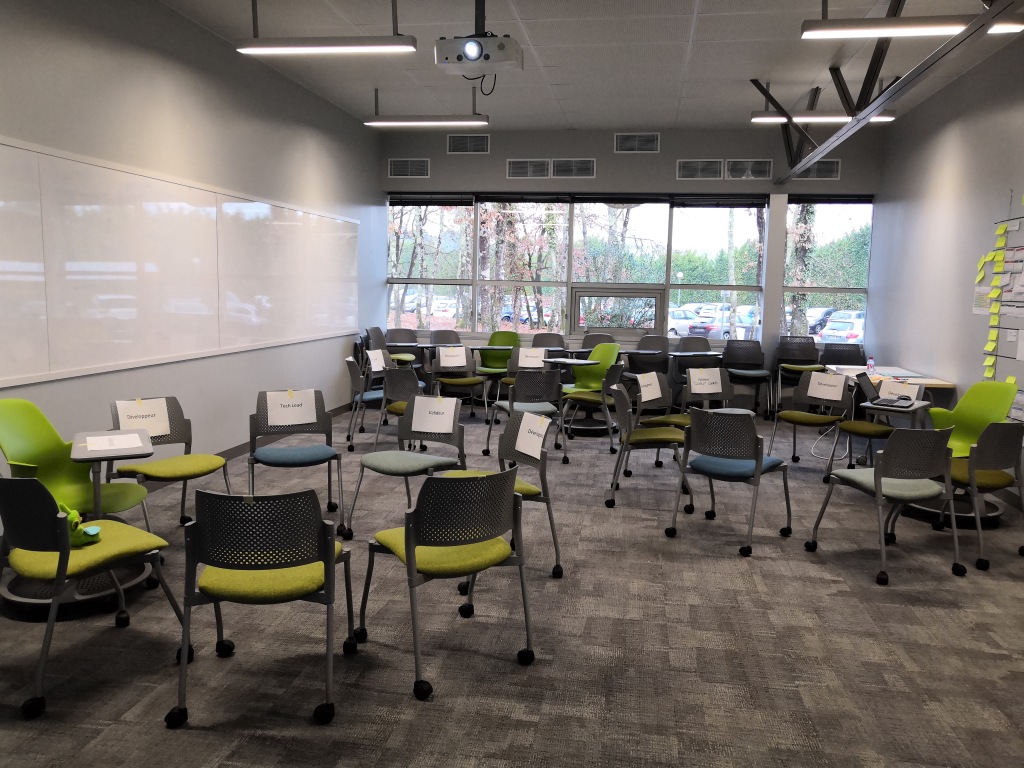
The growth of a team, the uncertainties of departures and recruitments or changes in objectives or scope are all situations that lead us to rethink the composition and organization of teams.
In a top-down approach, the manager thinks alone to make a proposal for team reorganization. This can generate frustration and a lack of buy-in to the proposal because there is rarely a perfect organization: a reorganization proposal is often a compromise.
Any change in the organization of a team will have an impact on the productivity of the team. A lack of buy-in to the proposed change can influence motivation and slow down acceptance of the change. On the other hand, despite the qualities of the manager and when you believe in the benefits of collective intelligence, it seems more effective to involve the teams in the construction of the reorganization proposal. However, and especially when the team is large, how do you get them involved?
In this article, I wanted to share with you a workshop format that allowed us to define a target organization for a team of around twenty people who had to organize themselves into 3 sub-teams. This workshop is a mix of Management3.0 Meddlers Game which provides visual support for reflection and discussion, and Social Presencing Theater which invites us to physically put the group in movement to reach its highest potential.
Preparation
You should prepare a presentation explaining:
- Why we need to change our organization
- What are the rules of the workshop: people will propose organization until everyone in the room agrees with the teams designed
- What are the constraints to respect (1 scrum master per team, teams should mix different skills and/or experiences, etc.) if you have some
- How people will proceed for this workshop
You also have to prepare:
- A meeting room big enough to host everybody
- Printed hats for roles from the meddler game that people will stick on their clothe with their own role, or on empty chairs to represent absent people or future colleagues.
- As many chairs as team members and additional chairs to represent people you could hire, or new roles you could create. If possible, use chairs with wheels. The chairs will be moved to design the teams.

Run the workshop
The workshop takes place in iterations.
For each iteration:
- People discuss and create teams according to their perception of the different constraints For that, they move the chairs and they will seat in the team they think they should beling to.
- Once everyone is seated, the group takes a critical look at the result and lists the unmet parameters.
- If all the parameters are met, validate the participants’ adherence to the solution. If you have an agreement, the workshop is over.
- If not all parameters are met, or not all participants agree, a new iteration is made to improve the distribution.
My learnings as a facilitator
To conclude, I’d like to share what I learnt facilitating this practice. First, it is important to take your time to prepare the exercise with people that will help you to facilitate it. The exercise was very new in my company, and I should say people were quite skepticals at the beginning. It was really helpul to have other people understanding the exercise so they can drive the others at the beginning. Second, this practice really benefits from the energy of the group once they started to move and discuss, and we finished earlier than we planned since in 3 iterations, people has designed 3 new teams, cross-functionnals and really well balanced in terms of junior and senior profiles. Having the meddlers material for discussion really improved the discussion. If I had to do this worshop again, I would take some time a few days before to explain it to the teams involved, so people would be less surprised, and they could ask questions in advance or suggest ideas.